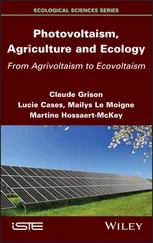exactly compensating density dependence
A similar relationship is shown in Figure 5.3b, but this time for a plant, the yellow star thistle, Centaurea solstitialis , in California, USA, relating the density of seedlings to the initial number of seeds in the soil. This time, though, at the highest seed densities, the number of surviving seedlings levelled off. The density dependence was exactly compensating : as initial density increased the mortality rate rose to counteract it.
intraspecific competition and fecundity
The patterns of density‐dependent fecundity that result from intraspecific competition are, in a sense, a mirror‐image of those for mortality ( Figure 5.4). Here, though, the per capita birth rate falls as intraspecific competition intensifies. At low enough densities, the birth rate may be density independent ( Figure 5.4a, lower densities). But as density increases, and the effects of intraspecific competition become apparent, birth rate initially shows undercompensating density dependence ( Figure 5.4a, higher densities), and may then show exactly compensating density dependence ( Figure 5.4b, throughout; Figure 5.4c, lower densities) or overcompensating density dependence ( Figure 5.4c, higher densities).
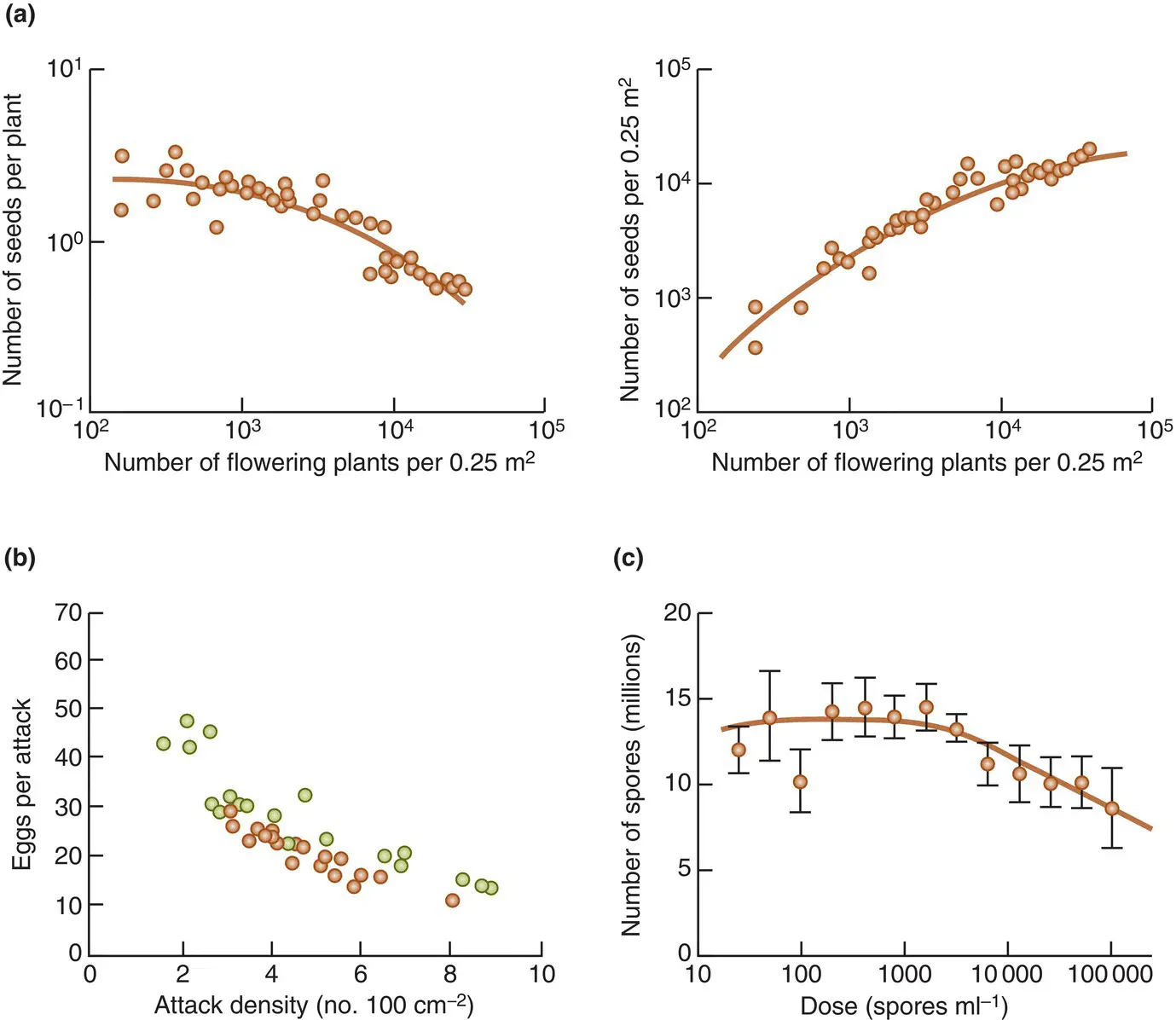
Figure 5.4 Density‐dependent fecundity.(a) The fecundity (seeds per plant) of the annual dune plant Vulpia fasciculata is constant at the lowest densities (density independence, left). However, at higher densities, fecundity declines but in an undercompensating fashion, such that the total number of seeds continues to rise (right). (b) Fecundity in the southern pine beetle, Dendroctonus frontalis , in East Texas, USA (the number of eggs laid each time a beetle ‘attacks’ a tree) declines with increasing density of these attacks in a way that compensates more or less exactly for the density increases: the total number of eggs produced (eggs per attack × attack density) was roughly 100 per 100 cm 2, irrespective of attack density over the range observed (  , 1992;
, 1992;  , 1993). (c) When the planktonic crustacean Daphnia magna was infected with varying numbers of spores of the bacterium Pasteuria ramosa , the total number of spores produced per host in the next generation was independent of density (exactly compensating) at the lower densities, but declined with increasing density (overcompensating) at the higher densities. Standard errors are shown.
, 1993). (c) When the planktonic crustacean Daphnia magna was infected with varying numbers of spores of the bacterium Pasteuria ramosa , the total number of spores produced per host in the next generation was independent of density (exactly compensating) at the lower densities, but declined with increasing density (overcompensating) at the higher densities. Standard errors are shown.
Source : (a) After Watkinson & Harper (1978). (b) After Reeve et al . (1998). (c) After Ebert et al . (2000).
5.2.2 Intraspecific competition and density‐dependent growth
Intraspecific competition can also have a profound effect on individual growth, which is often a forerunner of the effects on survival and fecundity that we have already seen: smaller individuals are less likely to survive and less fecund. We see an example of an effect on butterfly larvae in Figure 5.5.
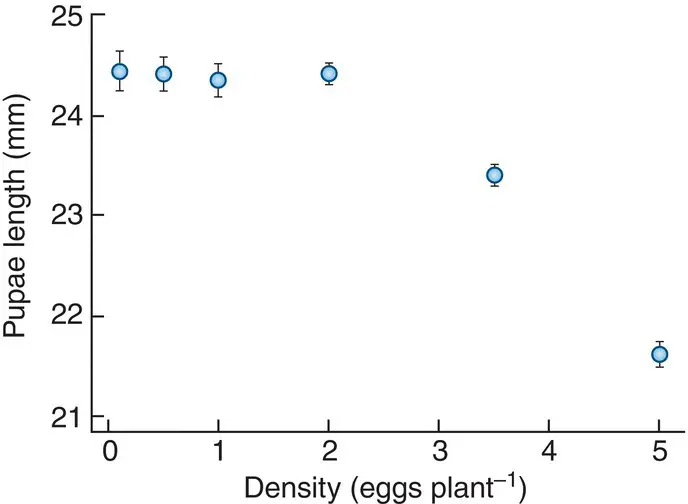
Figure 5.5 Density‐dependent growth.The mean length of monarch butterfly pupae, Danaus plexippus , reared at different densities. Growth was density independent at the lowest densities but declined at densities above around two eggs per plant. Bars are SEs.
Source : After Flockhart et al . (2012).
constant final yield
Such effects are particularly marked in modular organisms. For example, when carrot seeds ( Daucus carota ) were sown at a range of densities, the yield per pot at the first harvest (29 days) increased with the density of seeds sown ( Figure 5.6). After 62 days, however, and even more after 76 and 90 days, yield no longer reflected the numbers sown. Rather it was the same over a wide range of initial densities, especially at higher densities where competition was most intense. Plant ecologists have referred to this pattern as reflecting the ‘law of constant final yield’ (see Weiner and Freckleton (2010) for a review), though it is debatable whether ecology really has any universal ‘laws’ in the same way as, say, physics does. Individuals suffer density‐dependent reductions in growth rate, and thus in individual plant size, which tend to compensate exactly for increases in density (hence the constant final yield). This suggests, of course, that there are limited resources available for plant growth, especially at high densities, which is borne out in Figure 5.6by the higher (constant) yields at higher nutrient levels.
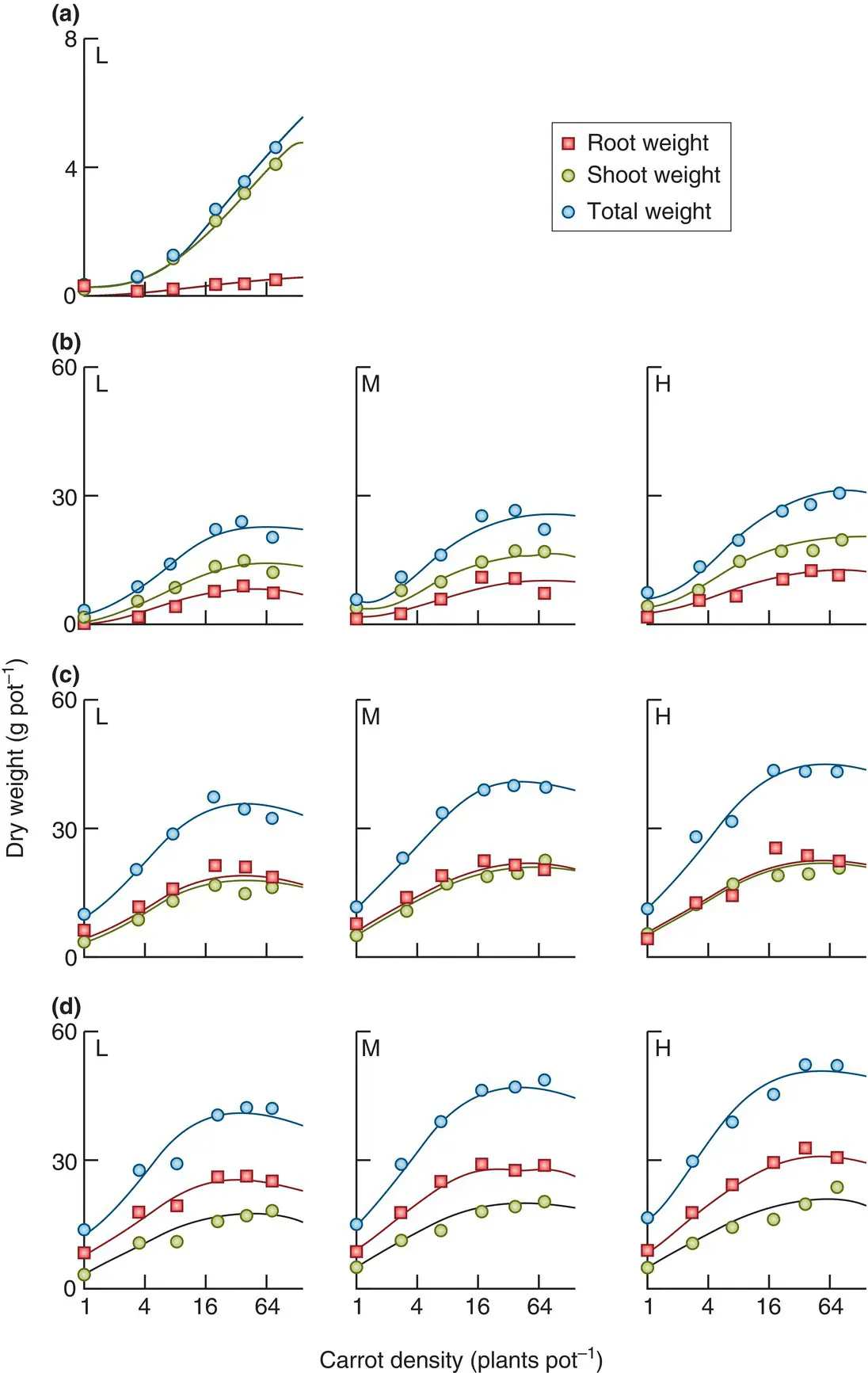
Figure 5.6 Plants sown at a range of densities often grow to achieve a constant final yield.The relationship between yield per pot and sowing density in carrots ( Daucus carota ) at four harvests ((a) 29 days after sowing, (b) 62 days, (c) 76 days, and (d) 90 days) and at three nutrient levels (low, medium and high: L, M and H, respectively), given to pots weekly after the first harvest. Points are means of three replicates, with the exception of the lowest density and the first harvest (both nine replicates). The curves were fitted in line with theoretical yield–density relationships, the details of which are unimportant in this context.
Source : After Li et al . (1996).
Yield is density ( d ) multiplied by mean weight per plant  . Thus, if yield is constant ( c ):
. Thus, if yield is constant ( c ):
(5.1) 
and so:
(5.2) 
and:
(5.3) 
Thus, a plot of log mean weight against log density should have a slope of −1.
Data on the effects of density on the growth of the grass Vulpia fasciculata are shown in Figure 5.7, and the slope of the curve towards the end of the experiment does indeed approach a value of −1. Here too, as with the carrot plants, individual plant weight at the first harvest was reduced only at very high densities – but as the plants became larger, they interfered with each other at successively lower densities.
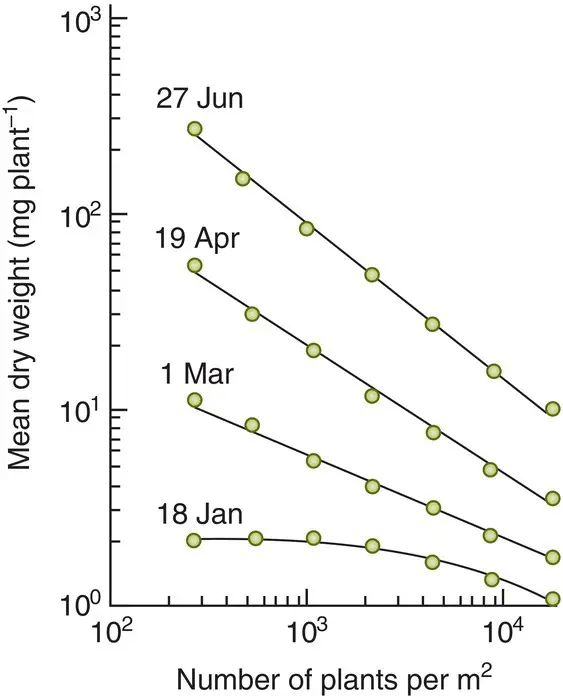
Figure 5.7 The ‘constant final yield’ of plants illustrated by a line of slope −1when log mean weight is plotted against log density in the dune annual, Vulpia fasciculata . On 18 January, particularly at low densities, growth and hence mean dry weight were roughly independent of density. But by 27 June, density‐dependent reductions in growth compensated exactly for variations in density, leading to a constant yield.
Читать дальше


 , 1992;
, 1992;  , 1993). (c) When the planktonic crustacean Daphnia magna was infected with varying numbers of spores of the bacterium Pasteuria ramosa , the total number of spores produced per host in the next generation was independent of density (exactly compensating) at the lower densities, but declined with increasing density (overcompensating) at the higher densities. Standard errors are shown.
, 1993). (c) When the planktonic crustacean Daphnia magna was infected with varying numbers of spores of the bacterium Pasteuria ramosa , the total number of spores produced per host in the next generation was independent of density (exactly compensating) at the lower densities, but declined with increasing density (overcompensating) at the higher densities. Standard errors are shown.

 . Thus, if yield is constant ( c ):
. Thus, if yield is constant ( c ):







